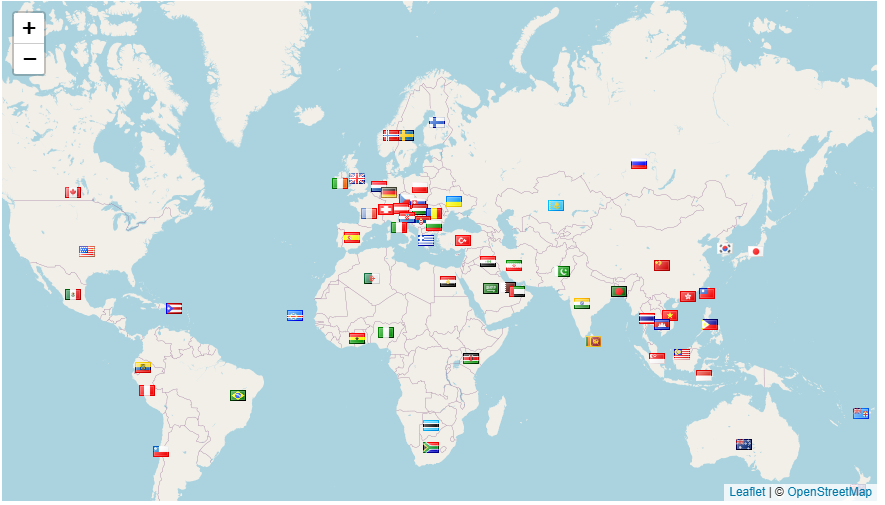Adaptation to Climate Change, Conservation and Financial Feasibility in Heritage Buildings: A Nexus of Ideological Divergence in Post-Flood Disaster Reconstruction
DOI:
https://doi.org/10.70822/journalofevrmata.v2i02.60Keywords:
Adaptation, Building Conservation, Climate Change; Disaster, Flooding, Reconstruction, ResilienceAbstract
Reconstruction following climate change induced disasters is often required after possible destruction of the built heritage. Achieving greater disaster resilience and reducing disaster risk due to climate change requires that such reconstruction must be balanced with financial and technical feasibility while conserving the historic character of the heritage building. The ‘Build-Back-Better’ mantra is mostly embraced during disaster induced reconstruction, and seeks to build safer and more resilient structures, to reduce pre-disaster vulnerabilities. The ‘Build-Back-Better’ approach assumes that there were vulnerabilities within the pre-disaster built environments that need to be rectified during reconstruction to enhance resilience. As such, achieving building conservation and climate adaptation during reconstruction might at first glance appear completely divergent. Conservation mostly focuses on maintaining the fabric of a place in its existing state, while adaptation may require updating/altering the components of an existing building. However, a more thorough understanding may lead to the conclusion that there is a convergence. This is because the conservation of the built heritage should contribute to resilience, in many ways similar to adaptation, especially in the context of post-disaster recovery. A divergence will result in a fairly unprecedented exposure to natural hazards triggered by climate change, and amplify the performance deficiencies, in terms of functional, technological and normative obsolescence. A convergence is needed due to the increasing requirements of safety, well-being and accessibility of the historic and architectural values, whose conservation is sought. Flooding is the most widely spread climate change induced disaster that affects the built environment globally. This study highlights how heritage conservation can techno-economically align with the resilience agenda, during reconstruction following flood disasters induced by climate change.
References
Karl, T. R., Meehl, G. A., Miller, C. D., Hassol, S. J., Waple, A. M., & Murray, W. L. (2008). Weather and Climate Extremes in a Changing Climate; Regions of Focus: North America, Hawaii, Caribbean, and U.S. Pacifc Islands. A Report by the U.S. Climate Change Science Program and the Subcommittee on Global Change Research. Washington, D.C., USA: Department of Commerce, NOAA’s National Climatic Data Center.
National Climatic Data Center. (2010, December). State of the Climate Global Analysis: Annual 2010. Retrieved May19, 2011, from http://1.usa.gov/fxdFai
Ebi, K.L. & Meehl, G.A. (2007). The Heat is On: Climate Change & Heatwaves in the Midwest. In [Gulledge, J. & Smith, J., Eds.] Regional Impacts of Climate Change: Four Case Studies in the United States. Pew Center on Global Climate Change, Arlington, Virginia USA.
Karl, T. R., Melillo, J. M., & Peterson, T. C. (2009). Global Climate Change Impacts in the United States. Cambridge University Press. Available at http://1.usa.gov/7Mcd7Q
Meehl, G. A., Tebaldi, C., Walton, G., Easterling, D., & McDaniel, L. (2009). The relative increase of record high maximum temperatuers compared to record low minimum temperatures in the U.S. Geophysical Research Letters , 36(23), L23701.
Ganguly, A. R., Steinhaeuser, K., Erickson III, D. J., Branstetter, M., Parish, E. S., Singh, N., et al. (2009). Higher trends but larger uncertianty and geographic variability in 21st century temperature and heat waves. PNAS , 106 (37),15555-15559.
Seidel, D. J., Fu, Q., Randel, W. J., & Reichler, T. J. (2007). Widening of the tropical belt in a changing climate. Nature Geoscience , 1, 21-24.
National Climatic Data Center, (2011). U.S. Climate Extremes Index, National Oceanic and Atmospheric Administration.Retrieved November 22, 2023, from: http://1.usa.gov/vAH4Qx
IPCC, (2001). Climate Change 2001: The Scienti#c Basis. Contribution of Working Group I to the Third Assessment Report of the Intergovernmental Panel on Climate Change in Houghton, J.T., Y. Ding, D.J. Griggs, M. Noguer, P.J. van der Linden, X. Dai, K. Maskell, & C.A. Johnson (eds.)]. Cambridge University Press, Cambridge, United Kingdom and New York, NY, USA.
Schar, C., Vidale, P.L., Luthi, D., Frei, C., Haberli, C., Liniger, M.A. & Appenzeller, C. (2004). The Role of Increasing Temperature Variability in European Summer Heatwaves. Nature 427, 332-336.
Stott, P. A., Stone, D., & Allen, M. (2004). Human contribution to the European heatwave of 2003. Nature , 432, 610-614.
Lenderink, G., & van Meijgaard, E. (2008). Increase in hourly precipitation extremes beyond expectations from temperature changes. Nature Geoscience, 1, 511-514.
Pall, P., Aina, T., Stone, D. A., Stott, P. A., Nozawa, T., Hilberts, A. G., et al. (2011). Anthropogenic greenhouse gascontribution to "ood risk in England and Wales in autumn 2000. Nature, 470, 382-385.
B. Isakhan, L. Meskell,. (2019). UNESCO’s project to ‘Revive the Spirit of Mosul’: Iraqi and Syrian opinion on heritage reconstruction after the Islamic State, Int. J. Herit. Stud. 25 (11) 1189–1204, https://doi.org/10.1080/13527258.2019.158988.
N. Munawar. (2022).Reconstructing narratives: the politics of heritage in contemporary Syria, J. Soc. Archaeol. https://doi.org/10.1177/1469605322.073992.
S. Fatoric, E. Seekamp. (2017). Are cultural heritage and resources threatened by climate change? A systematic literature review, Climatic Change 14 227–254.
G. Hambrecht, M. Rockman. (2017). International approaches to climate change and cultural heritage, Am. Antiq. 82 (4) 627–641.
J. Kennedy, J. Ashmore & E., B., I. Kelman. (2008). The meaning of ‘build back better’: evidence from post-tsunami aceh and Sri Lanka, J. Contingencies Crisis Manag. 16 (1) 24–36, https://doi.org/10.1111/j.1468-5973.2008.00529.x.
S. Mannakkara, S. Wilkinson, (2013) Build back better principles for post-disaster structural improvements, Struct. Surv. 31 (4) 314–327.
J. McCaughey, P. Daly, I. Mindzir, S. Mahdi, A. Patt . (2018). Socio-economic consequences of post-disaster reconstruction in hazard-exposed areas, Nat. Sustain. 1, 38–43.
M. Hall, T. Baird, M. James, Y. Ram. (2015) Climate change and cultural heritage: conservation and heritage tourism in the anthropocene, J. Herit. Tourism 11 (1) 10–24.
H. Kalman. (2017). Destruction, mitigation, and reconciliation of cultural heritage, Int. J. Herit. Stud. 23 (6) 538–555, https://doi.org/10.1080/13527258.2017.1289475.
T. Rico. (2016). Constructing Destruction: Heritage Narratives in the Tsunami City, Routledge, New York.
T. Rico, Reclaiming post-disaster narratives of loss in Indonesia, Int. J. Herit. Stud. 26 (1) (2020), https://doi.org/10.1080/13527258.2018.1552612.
E. Avrami, Creative destruction and the social (Re) construction of heritage, Int. J. Cult. Property 27 (2) (2020) 215–237, https://doi.org/10.1017/S0940739120000120.
United State Department for Interior (2021), Guidelines On Flood Adaptation For Rehabilitating Historic Buildings. Technical Preservation Services Washington, DC.
ASCE (2005), “Flood resistant design and construction”, ASCE Standard ASCE 24-05, American Society of Civil Engineers, doi: 10.1061/9780784408186.
DEFRA (2008), Consultation on Policy Options for Promoting Property-level Flood Protection and Resilience, Flood Resilience Consultation, Department for Environment, Food and Rural Affairs, London.
FEMA (2014), P-312 Homeowner’s Guide to Retrofitting, 3rd ed., Federal Emergency Management Agency, New York.
RIBA (2009), Climate Change Toolkit: Designing for Flood Risk, Second ed., Royal Institute of British Architects (RIBA), London, available at: https://www.architecture.com/Files/RIBAHoldings/PolicyAndInternationalRelations/Policy/Environment/2Designing_for_floodrisk.pdf (accessed 27 May 2022).
UN ESCAP (2012), Integrating Environmental Sustainability and Disaster Resilience in Building Codes, United Nations Economic and Social Commission for Asia and the Pacific, Bangkok.
Downloads
Published
Issue
Section
License
Copyright (c) 2024 Amadi Alolote Ibim

This work is licensed under a Creative Commons Attribution 4.0 International License.







